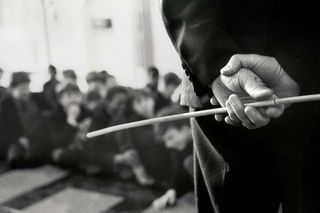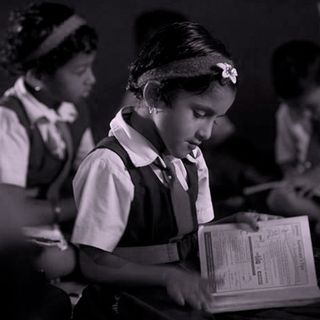
Teacher Punishes 6‑year‑old for Whistling by Pulling Down His Pants
This deeply troubling trend of corporal punishment must stop.

A Navi Mumbai teacher was arrested Tuesday for allegedly punishing a 6-year-old student for whistling in class by pulling down his pants, reports the Times of India. The student was in trouble for whistling in class.
“The teacher told the boy’s father that she had only pretended to remove his shorts to scare him so that he stopped being mischievous. She claimed she did not actually remove it,” Senior Inspector Machindra Khade, of the Kalamboli police station, told ToI.
This is the latest in a disturbing trend of extreme corporal punishment. Last week, 16 girls in Delhi, aged 4 to 5, were reportedly confined without food or water in a basement for five hours in retaliation for (alleged) unpaid school fees. Before that came reports of a Class IV child beaten until bruised for not completing her homework. Thrashing and stripping are recurring themes in news reports of corporal punishment in Indian schools this year. And then there’s the uniquely cruel case of the teacher holding students’ hands over an open flame.
Indian schools, both public and private, have a long history of corporal punishment. As reported by The Wire, a 2010 report found 65% of schoolchildren in India said they have faced corporal punishment, sometimes due to their gender or caste. But it’s difficult to throw stones at teachers when earlier this year, a national survey revealed 77.5% of parents resort to hitting children when disciplining at home.
At best, these statistics speak to a troubling lack of empathy and respect for another human being; at worst, it speaks to a deep-seated cultural belief that children are innate, illogical troublemakers and some level of abuse is acceptable, even necessary, in order for them to learn and grow.
It is not. Quite often, what we mistake for willfully bad behavior is actually developmentally appropriate behavior. A 3-year-old throwing a tantrum is not purposefully being naughty – a concept they can’t even understand yet – but rather is attempting to express emotions for which they don’t yet have words. It’s possible a 6-year-old – an age when kids still learn best through physical experiences and play — whistling in classroom might be less interested in causing a disruption, and more interested in the cool sound they’ve just accidentally discovered they can make with their lips.
Of course, there are children who are intentionally mischievous and disruptive. Likely because children are biologically geared to want and seek attention from their caregivers. This is not a character flaw; they need attention from caregivers in order to thrive and grow and learn. Positive attention is best, of course, but in its absence, kids will seek negative attention.
Regardless of motivation, however, corporal punishment actively keeps children from learning the very lessons we, parents and teachers, want them to pick up, and ingrains other lessons that we probably don’t mean or want to teach. Corporal punishment teaches physical violence or humiliation is an acceptable way of dealing with behavior we don’t like in others. Punishment, whether physical or otherwise, teaches children they will get attention for bad behavior – incentivizing them to repeat the bad behavior. And critically, punishment does not teach children what to do instead.
Plenty of studies show that spanking and other forms of corporal punishment only increase problematic behavior, and that positive discipline – lavishing praise on good behavior and ignoring minor disruptions — is a far more effective way of shaping children’s behavior, both in the classroom and at home. (Of course, there are some problematic behaviors that need to be addressed and curbed head-on; in these cases, corporal punishment is still not an effective method.) In fact, the principles of positive discipline, as The Wire notes, have been incorporated into 2017 guidelines from the National Commission for Protection of Child Rights (NCPCR) aimed at eliminating corporal punishment in schools.
Clearly, these principles have yet to permeate the system, or even our homes. Positive discipline takes time, and effort to observe and call attention to the kind of behavior we adults take for granted. Punishment, especially corporal punishment, is swift and reactive. But it’s a quick, momentary fix that only sets up the next round of bad behavior, trapping parents and teachers and kids in a vicious, damaging cycle.
It’s easy to say, “We faced corporal punishment in school, and we turned out okay.” (Although, did we really?) But isn’t the point of parenting and teaching to set kids up for a better – the best possible – life? In 21st century schools, and homes, corporal punishment has no place. We can, and must, do better.
Related:
Related


WCD Ministry Calls for Total Ban on Child Marriage
